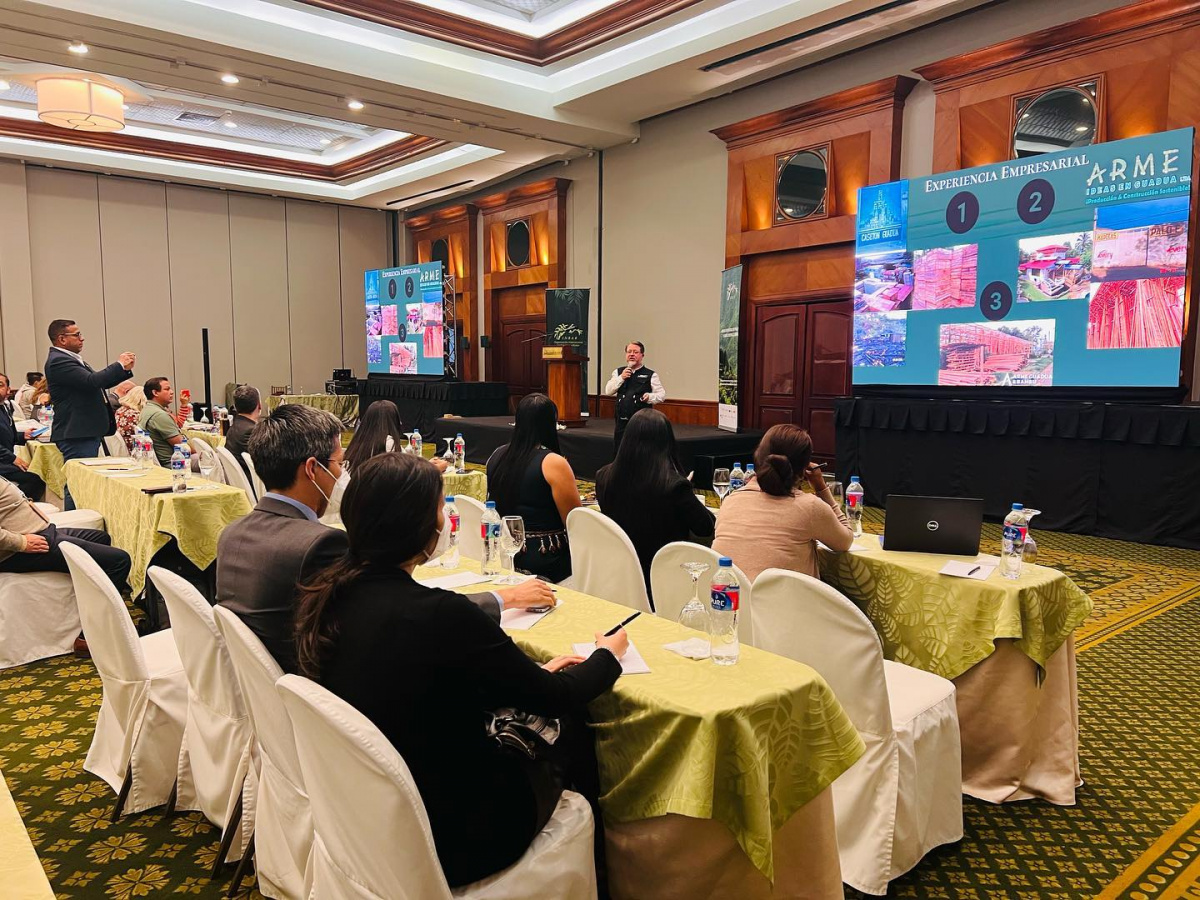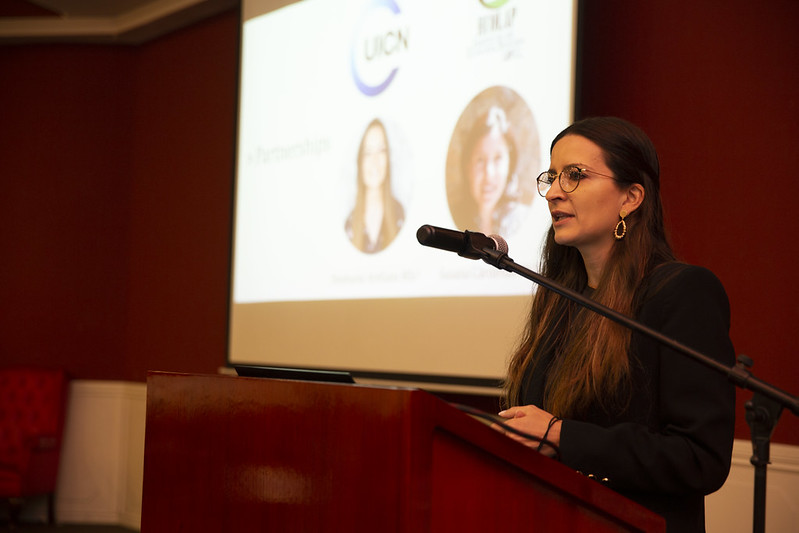UN Biodiversity Conference 2016: Compromise with a pinch of salt
With less than four years remaining to implement the biodiversity plan agreed by world governments in 2010, IUCN calls for continued efforts to achieve the Aichi biodiversity conservation targets, as the UN biodiversity conference closes in Cancún, Mexico. IUCN stresses that while progress has been made in some areas, significant efforts must be sustained to meet the Aichi Targets, which are fundamental to accomplishing the Sustainable Development Goals (SDGs).

The thirteenth meeting of the Conference of the Parties to the Convention on Biological Diversity (CBD COP13) took place from 4-17 December 2016 in Cancun, Mexico.
Photo: © IUCN
As Parties to the Convention on Biological Diversity (CBD) gear up towards discussing and negotiating a new Strategic Plan for Biodiversity post-2020, IUCN is concerned about any weakening of the resolve to address key challenges. It is clear that national ambitions, as reflected in national biodiversity strategies and action plans, have fallen short of the level required to make sufficient progress. Much more needs to be done if biodiversity loss is to be halted.
However, there is good news that we must celebrate and emulate. The declaration at the start of the 13th Conference of the Parties to the Convention on Biological Diversity (CBD COP13) by the President of the host country, Enrique Peña Nieto, to establish four new protected areas and to implement controls on extractive industries in Mexico must be applauded. This step has already significantly accelerated both national and global progress towards Aichi biodiversity Target 11, which focuses on protected areas, and will have a significant positive impact on the achievement of other Aichi Targets.
During the conference, an update on the Protected Planet Report 2016 revealed that significant progress has been made in marine conservation during the past six months, with 5.1% of the global ocean being protected and 12.7% of areas within territorial waters. These will be further boosted by Mexico’s announcement.
Mexico also joined other countries like Colombia, Peru, Japan, Vietnam, China, Republic of Korea, Benin, Australia, Kenya, Spain and France in promoting the achievement of successful protected and conserved areas by becoming a ‘Green List’ partner country. IUCN is pleased that the Cancún biodiversity conference has invited Parties to use the IUCN Green List of Protected and Conserved Areas as a voluntary standard to promote effective and equitable protected areas.
Important strides will be made in both Target 11 on protected areas and Target 12, which aims to prevent species extinctions, when countries implement their road maps of actions to address all elements of the targets, including making sure that Key Biodiversity Areas are secured. Parties continue to recognise the essential role played by Indigenous peoples and local communities, acknowledging the need to better define and apply “other effective area-based conservation measures” and to resolve the overlaps between protected areas and areas and territories conserved by Indigenous peoples and local communities (ICCAs). IUCN is pleased to respond to the COP’s request to develop and provide guidance to Parties.
Launched by IUCN during the 2016 World Conservation Congress, the Honolulu Challenge on Invasive Alien Species aims to accelerate measures to prevent future invasions and to manage existing ones. IUCN applauds pledges made by New Zealand and the United Kingdom.
Discussions on ‘mainstreaming biodiversity’ reaffirmed the fundamental role that biodiversity plays at the landscape, ecosystem, community and genetic levels across all development sectors, including agriculture, fisheries, forestry and tourism. Parties were urged to strengthen efforts to mainstream conservation and sustainable use within and across various sectors, at all levels and scales, focusing on policy and economic tools. It is now necessary to focus on applying and testing these principles in practice, to ensure that such tools become more widely used and effectively scaled up.
During the conference, IUCN also presented examples of nature-based solutions to global challenges, and was pleased to work with development partners to accelerate use of the PANORAMA Platform of Solutions for a Healthy Planet as one means to distil and disseminate knowledge and understanding of mainstreaming in marine and coastal situations, through protected areas, and through ecosystem-based adaptation.
In spite of some reservations, a decision was taken on how to enhance scientific methodologies and approaches on the description of areas meeting the criteria for ecologically or biologically significant marine areas (EBSAs). The anticipated heated discussion around reference to the United Nations Convention on the Law of the Sea (UNCLOS) did take a lot of time, with Parties to UNCLOS favouring reference to the instrument and Parties to the CBD (but not UNCLOS) reaffirming the sovereignty of coastal States over their territorial sea, as well as their sovereign rights and jurisdiction in the exclusive economic zone and continental shelf.
Parties took a considerable step forward by adopting voluntary guidelines for the development of mechanisms to ensure the “prior and informed consent”, “free prior and informed consent” or “approval and involvement” of Indigenous peoples and local communities for accessing their knowledge, innovations and practices and the fair and equitable sharing of benefits arising from their use.
As the Cancún biodiversity conference closes, IUCN stresses that time is of essence. The work that will have to be carried out over the next two years until Parties meet again in Egypt will shape the outcomes of the UN Decade for Biodiversity 2011-2020.



